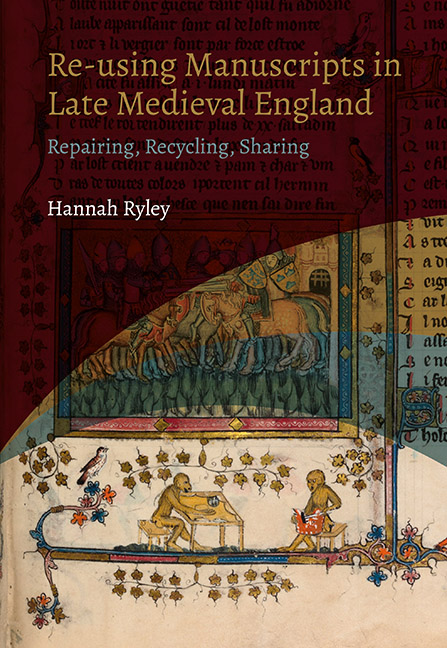Introduction
Published online by Cambridge University Press: 16 July 2022
Summary
Fifteenth-century manuscript culture was generally disposed to make books well, and to make them to last. As Michael Sargent puts it, ‘the production of medieval manuscript books was based on the expectation of longevity, rather than obsolescence’. That longevity made possible repair, recycling and re-use. Parchment's longevity in the UK continues to be a topic of discussion even in the twenty-first century: debates in February 2016 noted the advantages of maintaining the practice of recording parliamentary statutes on parchment, and remarked on its potential for durability. Medieval manuscripts’ material features, such as repaired parchment leaves, overwritten palimpsests and fragments from other books bound in as flyleaves, constitute physical witnesses to the past, many of which signal that they were made and sustained well. These physical residues are not just leftover scraps; they prompt questions about the wider context of medieval manuscript culture and its evident and varied capacity for re-using book materiality. The durable qualities of books – and, therefore, multiple opportunities to repair, recycle and re-use them or their component materials – were achieved through practices and processes of craftsmanship and care. Indeed, the long-term survival of so many medieval manuscripts suggests that methods of medieval book production, handling and circulation enabled the extraordinary durability of these objects. What this study argues, then, is that the material remains of fifteenth-century manuscript culture offer a history of these re-use practices.
In manuscript culture, books can be traced through a sequence of stages: production, handling and circulation. Books may seem to be a coherent whole, especially today, accustomed as we are to the mechanised production of abundant print copies and digital interfaces. However, then (as now) all books were made from component parts, in a range of materials. The assembly of fifteenth-century books was often fluid in nature, and ‘production was just one stage in the dynamic life cycle of a manuscript’. That production could be ad hoc, occurring in fits and starts over time, it could be commissioned from a stationer, it could be bought ready-made, or second-hand or it could be the result of do-it-yourself modes of production. Studying the ‘stratigraphy’ of such manuscripts – essentially, manuscript archaeology – by looking back from a seemingly fully formed book to the origins of the various materials that come together to form it, can help answer a plethora of questions.
- Type
- Chapter
- Information
- Re-using Manuscripts in Late Medieval EnglandRepairing, Recycling, Sharing, pp. 1 - 18Publisher: Boydell & BrewerPrint publication year: 2022



